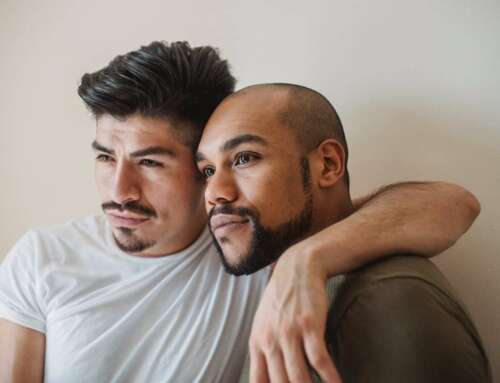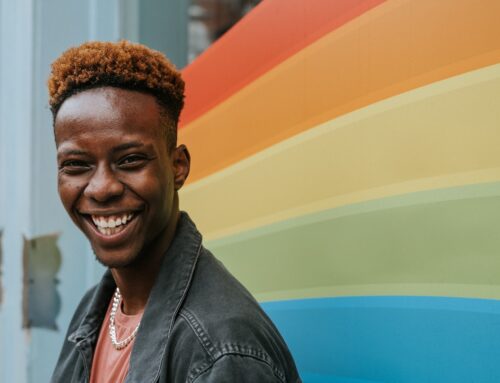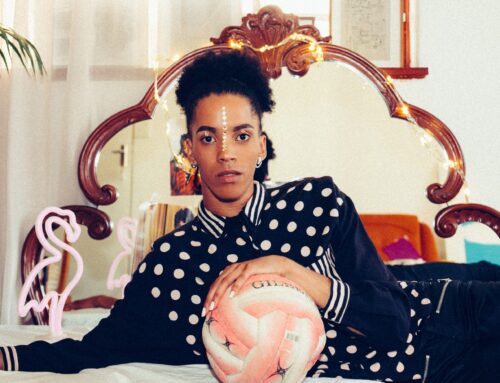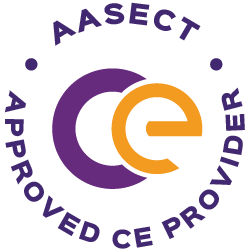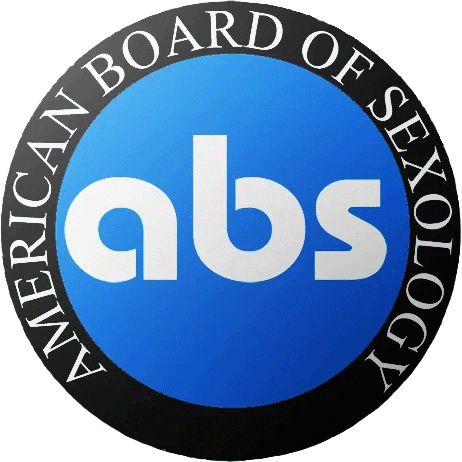In our quest to ensure that all individuals feel seen, heard, and validated within their sexual and romantic identities, it’s paramount that we turn our attention to a significant yet often overlooked day: Pansexual and Panromantic Awareness and Visibility Day. This day is not just a commemoration—it’s an opportunity for us as sex coaches to deepen our understanding of the diverse spectrum of human sexuality and romance, and to enhance our practice in a way that caters to all identities. Understanding and Supporting Pansexuality and Panromanticism as a Sex Coach is so important!
Pansexuality and panromanticism, while increasingly recognized, are still widely misunderstood or unknown concepts for many. As professionals dedicated to fostering healthy sexual attitudes and behaviors, it’s our responsibility to not only understand these identities but also create a safe space where individuals can explore and affirm their identities without fear of judgment or misunderstanding.
This article is aimed at equipping you, the practicing or aspiring sex coach, with valuable insights into pansexuality and panromanticism. We’ll debunk common misconceptions, discuss the importance of visibility, and provide practical tips on how to be an ally to these communities. We’ll also share resources for further learning and invite you to take an active role in promoting Pansexual and Panromantic Awareness and Visibility Day. In doing so, we can better serve our clients, enrich our practice, and contribute to a more inclusive and understanding world.
Unpacking Pansexuality and Panromanticism
To be effective in our roles as sex coaches, understanding the varied spectrum of human sexuality and romantic inclinations is key. This includes a comprehensive understanding of pansexuality and panromanticism.
Pansexuality is a sexual orientation where individuals are attracted to others regardless of their gender. This means a pansexual person can experience sexual attraction to people who identify as male, female, non-binary, genderqueer, transgender, or any other gender identity. Pansexuality recognizes and embraces the fluidity of gender and the potential for attraction beyond the gender binary.
Panromanticism, on the other hand, is a romantic orientation. Panromantic individuals can form emotional, romantic connections with others, irrespective of their gender identity. It’s important to note that romantic and sexual orientations don’t always align; someone could identify as panromantic but not pansexual, and vice versa.
Misconceptions about these identities abound, often stemming from a lack of understanding or awareness. For instance, many people mistakenly believe that pansexuality is the same as bisexuality. While both acknowledge attraction beyond a single gender, bisexuality typically refers to attraction to both males and females, or to one’s own and other genders. Pansexuality, in contrast, explicitly includes attraction to all gender identities and expressions.
Another common misconception is that pansexuality and panromanticism are “phases” or results of confusion. This is not the case—like any other sexual or romantic orientation, they are valid identities that individuals consistently identify with over time.
As sex coaches, we need to be aware of these misconceptions and ensure we don’t perpetuate them in our practice. Instead, we can strive to affirm and validate our clients’ identities, providing them with the safe, non-judgmental space they need to explore their sexuality and romantic inclinations.
Amplifying Pansexual and Panromantic Visibility
Visibility plays a crucial role in the recognition and acceptance of any identity, particularly those within the LGBTQIA+ community. For pansexual and panromantic individuals, increased visibility can lead to greater understanding, acceptance, and validation of their identities, both within society at large and in their personal lives.
Visibility in this context refers not only to representation in media and popular culture but also to acknowledgement and validation in everyday interactions and professional contexts, like in our work as sex coaches. When individuals see their identities represented and respected, they can feel more comfortable expressing themselves and seeking help when needed.
In our roles as sex coaches, we are uniquely positioned to contribute to this visibility. We can do so by acknowledging and validating our clients’ pansexual or panromantic identities, by being mindful of our language and assumptions, and by creating an inclusive space where all forms of sexual and romantic orientations are respected.
However, visibility comes with responsibility. It’s crucial that we strive for accurate, respectful representation of pansexuality and panromanticism. Misrepresentations can perpetuate harmful stereotypes or misconceptions, which can cause further harm to these communities. We must ensure that our understanding of these identities is well-informed and nuanced, so that we can provide the best possible support to our clients.
By fostering visibility, we not only support our clients on an individual level, but we also contribute to a broader cultural shift toward acceptance and understanding of diverse sexual and romantic identities. In this way, we can make a significant positive impact both within our practice and beyond.
Sex Coaches as Advocates
As sex coaches, we have a remarkable opportunity to shape the narrative and enhance the understanding of diverse sexual and romantic identities such as pansexuality and panromanticism. Our roles go beyond passive acceptance; we have the opportunity to actively affirm and validate our clients’ identities, fostering an environment of safety, trust, and openness.
One of the primary ways we can do this is by respecting and affirming our clients’ self-identified orientations. This involves using the correct terms and pronouns that our clients prefer, and ensuring that our language and approach are consistently inclusive and affirming. We must remember that every individual’s experience of their sexuality or romantic orientation is unique, and refrain from making assumptions or generalizations.
In addition, we should be prepared to address unique concerns or questions that may arise for pansexual or panromantic clients. This could involve discussions about societal acceptance, self-acceptance, relationships, or sexual health. By staying informed and updated about issues relevant to the pansexual and panromantic communities, we can better assist our clients in navigating these concerns.
We also have a responsibility to challenge discrimination and bias, both within our own practice and in the wider field. If we encounter harmful stereotypes or misconceptions, it’s our duty to correct them and advocate for a more informed, respectful understanding of pansexuality and panromanticism.
Finally, it’s important that we create a safe, inclusive space for our clients. This means fostering an environment where clients feel comfortable discussing their experiences, exploring their identities, and asking questions without fear of judgment. By doing so, we can help our clients to feel seen, heard, and validated in their identities.
In these ways, we can use our roles as sex coaches to not only support our clients on an individual level, but also contribute to a broader cultural shift towards acceptance and understanding of diverse sexual and romantic identities.
Allyship in Action
As sex coaches, our allyship can extend beyond our professional interactions with clients. Being an ally to the pansexual and panromantic communities involves continuous learning, active support, and advocacy for these identities in all aspects of our lives.
One of the most fundamental ways to be an ally is to educate ourselves. This means seeking out reliable sources of information, engaging with content created by pansexual and panromantic individuals, and staying updated on issues affecting these communities. We’ll share some resources to support your continued education in the following section. The more we understand about these identities, the better equipped we are to support our clients and counteract misconceptions or prejudices.
Using inclusive language is another crucial aspect of allyship. As previously mentioned, this involves using the correct names, pronouns, and identifiers that individuals use for themselves. It also means avoiding language that erases or invalidates pansexual and panromantic identities. By modeling this behavior, we can encourage others in our field to do the same.
Standing up against discrimination is a key part of being an ally. If we encounter discriminatory behavior or language, whether in our professional or personal lives, it’s important that we challenge it. This could involve correcting misconceptions, speaking out against harmful stereotypes, or advocating for more inclusive policies within our field.
Promoting inclusivity in our practice is another effective way to be an ally. This could involve ensuring that our services are accessible and welcoming to individuals of all sexual and romantic orientations, seeking feedback from our clients about how we can better support them, or incorporating discussions about diverse sexual and romantic identities into our sessions.
Lastly, we can show our support by amplifying the voices of pansexual and panromantic individuals. This could involve sharing content created by these communities, attending events or webinars related to these identities, or advocating for greater representation within our field.
Being an ally is an ongoing commitment. It involves constant learning, growth, and active engagement. But by taking these steps, we can help to create a more inclusive, accepting environment for all.
Expanding Your Knowledge
Staying informed and continuously updating our knowledge is an integral part of our professional growth as sex coaches, particularly when it comes to understanding and supporting diverse sexual and romantic identities. Here are some resources to help deepen your understanding of pansexuality and panromanticism:
- Academic Research: Journals such as “The Journal of Sex Research” and “Archives of Sexual Behavior” often publish studies on diverse sexual orientations, providing valuable insights into pansexuality and panromanticism.
- Professional Development Courses: Look out for courses and workshops that focus on understanding and supporting diverse sexual and romantic orientations. These can often be found through professional organizations or institutions that specialize in sexuality studies.
- Books: Titles such as “You Are Not Alone! (I Promise): The Journey of a Pansexual, Gender Fluid, Crossdresser” by Robin Raynor, or “Real Talk About LGBTQIAP: Lesbian, Gay, Bisexual, Transgender, Queer, Intersex, Asexual, and Pansexual” by Tara Y Coyt offer important insights into non-binary sexual orientations, including pansexuality. And here’s a great list of fiction titles that feature pansexual characters.
- Podcasts and Webinars: There are numerous podcasts and webinars that discuss diverse sexual and romantic orientations. “Let’s be perfectly Queer” is one example of a podcast that delves into these topics.
- Thought Leaders and Activists: Follow and engage with activists and thought leaders in the pansexual and panromantic communities. Their personal experiences and insights can provide a valuable perspective. Some notable figures include activist and speaker Robyn Ochs, and actor and model Cara Delevingne.
- Organizations: Organizations such as the Bisexual Resource Center and the American Institute of Bisexuality often provide resources and information about pansexuality and panromanticism, as they advocate for broader bisexual+ recognition, which includes these orientations.
Remember, the landscape of understanding around sexual and romantic orientations is always evolving. As professionals committed to fostering healthy sexual attitudes and behaviors, we must stay informed and adaptable, ready to meet our clients with the understanding and support they need.
Shaping the Narrative
As we strive to create a more inclusive and understanding society, your active participation in Pansexual and Panromantic Awareness and Visibility Day can have a profound impact. This occasion offers a wonderful opportunity for you, as a sex coach or an aspiring one, to not only deepen your knowledge but also to actively engage in promoting inclusivity.
Here’s how you can get involved:
- Education: Continue learning about pansexuality and panromanticism. Use the resources shared in this article, and seek out new ones. Engage with content created by pansexual and panromantic individuals to gain insight into their experiences.
- Conversation: Start conversations about pansexuality and panromanticism. This could be with your clients, colleagues, or in your personal life. The more we talk about these identities, the more normalized they become.
- Social Media: Use your professional platforms to share information and resources about pansexuality and panromanticism. This could involve sharing posts about Pansexual and Panromantic Awareness and Visibility Day, or highlighting resources for further learning.
- Webinars and Events: Attend webinars and events related to pansexuality and panromanticism. This can provide you with further insights and also give you the chance to network with other professionals interested in these topics.
- Advocacy: Advocate for greater inclusivity within your field. This could involve pushing for more inclusive language in professional guidelines, or advocating for more representation of diverse sexual and romantic orientations in your professional community.
We are not just bystanders in the journey toward greater acceptance and understanding of diverse sexual and romantic orientations. As sex coaches, we are active participants, with the power to shape the narrative and make a real difference. So, let’s step up, take action, and contribute to a more inclusive and understanding world.
From Practice to Community
Understanding and supporting pansexuality and panromanticism is not just about enhancing our practice as sex coaches—it’s about contributing to a broader cultural shift toward acceptance and understanding of diverse sexual and romantic identities. As we commemorate Pansexual and Panromantic Awareness and Visibility Day, let’s remember that our roles extend beyond the individual clients we serve. We are influencers within our communities, with the power to shape perceptions and foster inclusivity.
In this article, we’ve explored the definitions and nuances of pansexuality and panromanticism, the power of visibility, our unique role as sex coaches, and practical ways to be an ally. We’ve also shared resources for further learning, and encouraged active participation in promoting awareness and visibility.
But the journey doesn’t stop here. Being an ally is an ongoing commitment. It involves continuous learning, active engagement, and open conversations. As we deepen our understanding of diverse sexual and romantic identities, we can better serve our clients, enrich our practice, and contribute to a more inclusive and empathetic world.
So, let’s take this knowledge and commitment into our daily practice. Let’s strive to be the best allies we can be, not just on Pansexual and Panromantic Awareness and Visibility Day, but every day. Together, we can make a difference.


